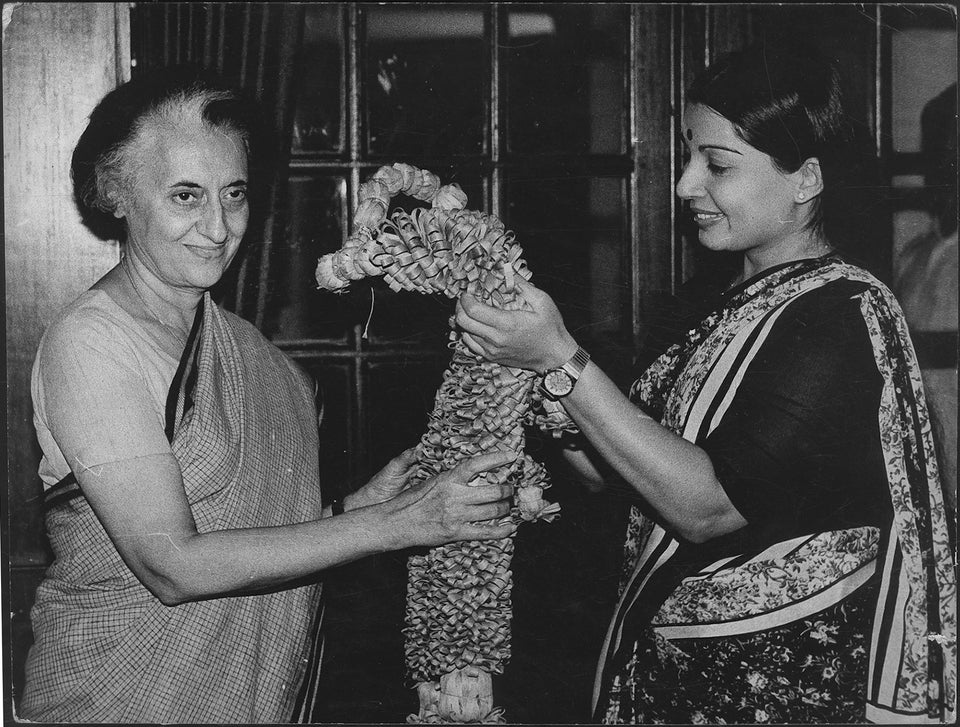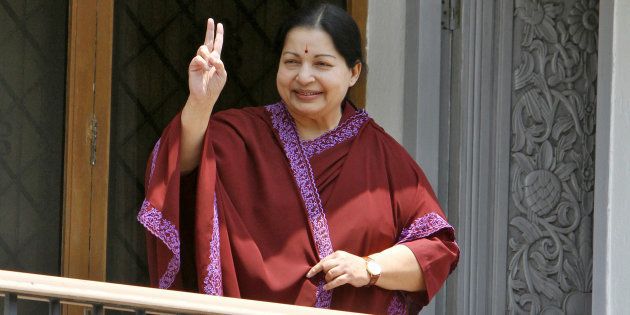
When J. Jayalithaa took oath for the first time as chief minister of Tamil Nadu in 1991, it was also the first time she wore a cape over her sari, a dress code she followed till her death on 5 December, 2016. Many saw it as a symbol of protest or strategic public reminder of one of the most humiliating but also politically potent moments in her career: two years earlier, an MLA from the ruling Dravida Munnetra Kazhagam (DMK) had pulled at her sari during an unruly budget session. She had sworn to enter the assembly only when it was safe for women. When she arrived in the cape as a CM, former India Today journalist and author Vaasanthi remembers a Tamil reporter asking Jayalalithaa why she wore it. The leader's reply betrayed nothing: "I like it."
For a politician who has been under public scrutiny for nearly four decades, J. Jayalalithaa eludes easy analysis. An AIADMK government under Jayalalithaa was a one-woman regime--opaque, unpredictable and having no discernible ideology. Jayalalithaa's paranoia and mistrust--a bureaucrat also added "disdain"--of people created a highly-centralised administration.
Given her non-transparency and personal elusiveness, it's hard to say how she weighed her decisions, or what the intention behind any policy was. As an administrator, she had an astoundingly firm hand but was also wildly inconsistent. Her first term (1991-96) was her most destructive, infamously autocratic one, the second (2001-06) started out vindictive but after an eventful 2004, ended on a high note. In her third term (2011-2016) and the 2016 term truncated by her death, she was focussed on massive, direct welfare policies for the poor. She has been called a feminist leader, great for economic growth and administratively efficient. A look at the policies themselves--both good and bad--could give some insight into how true these sobriquets are.
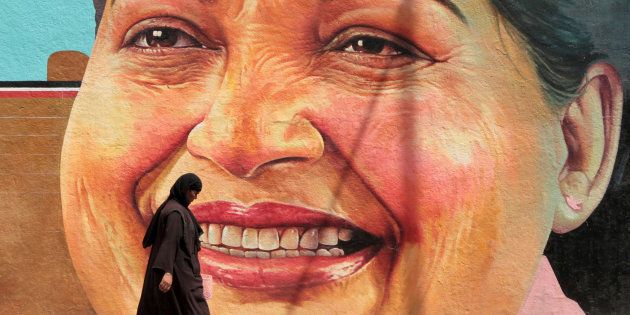
Women-centric
"Some of Jayalalithaa's boldest and best policies have been those that have a gender angle," says AS Paneerselvam, senior journalist and reader's editor of The Hindu.
In 1992, during her first term, CM Jayalalithaa launched the controversial Cradle Baby Scheme, to reduce female infanticide. The government placed about 200 cradles in primary health centres, temples, and orphanages in high-risk districts like Salem and Dharmapuri. Those who did not want their girl children could leave them anonymously in the cradle; the state would send the babies to registered adoption agencies. Civil society activists like Ruby Thiagarajan, president of Salem's Young Women's Christian Association have said it encouraged families to abandon their girl children and didn't reduce son preference. Yet, over the years, Jayalalithaa enthusiastically connected NGOs, health care workers and district collectors to run the programme.
Till today, the government has received at least 5,000 babies, and there is a dramatic decline in female infanticide in TN--from an annual average of about 3,000 between 1996 and 1999 to only 225 in 2003. However, the continuing fall in sex ratio in many districts points to the prevalence of sex-selective abortion. They were meant to be temporary, but that government cradles remain in existence today after 15 years raises questions about their efficacy in dealing with root causes. Researchers Sharada Srinivasan and Arjun Bedi write in the EPW that while the scheme was crucial, "it is not a substitute for addressing sex selection and to create an environment favourable to daughters."
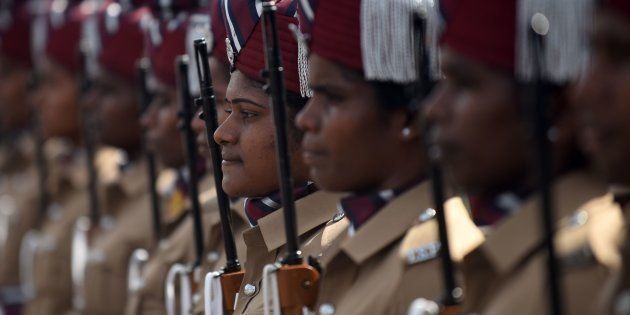
In the same 1991 term, Jayalalithaa started the first all-women police stations in the country and later set up an all-women task force. Today, TN has the largest number of women police stations in India, and the second largest number of women in its police force. It's not clear if this directly led to TN showing the lowest crimes against women in India (18 per lakh population, from 22 in 2013. National figure is about three times more), but it is sure to have played a crucial role.
Through the years, she also pointedly appointed efficient women as collectors, secretaries and Superintendents of Police. Since 2011, her chief advisor, for instance, has been the retired chief secretary Sheela Balakrishnan. "Amma was a taskmaster, but compared to the DMK, we found that she gave us a lot more respect and power," says a woman officer in the welfare department. "That made us want to work harder, to prove ourselves." From her handpicked officers, both men and women, Jayalalithaa also expected unwavering loyalty. In 1992, she appointed an able IAS officer VS Chandralekha as chairperson of the TN Industrial Development Corporation, but when the latter dissented on a project, Jayalalithaa is widely believed to have had goons throw acid on the officer's face. The incident sent ripples of fear through the bureaucracy.
"Amma was a taskmaster, but compared to the DMK, we found that she gave us a lot more respect and power."
In politics, however, Jayalaithaa's record of gender inclusion is only marginally better than the DMK. While her personal journey was a frontal challenge to patriarchy, it is perhaps a reflection of both the leader and the insular political system that she did not pave the way for other women politicians. From 1991 to 2011, only 11.2% of the candidates fielded by AIADMK were women (only 93 of 830). In 2016, the party allotted a mere 31 seats of 227 to women. "Wives, widows and daughters of existing politicians are preferred, and most of the others get unwinnable seats," says Sheelu Francis of the NGO Women's Collective.
Tamil Nadu has historically invested heavily in health, education and food security. Jayalalithaa continued this legacy but also successfully appropriated it to bolster her own political capital. In 2006, it was the DMK that swept to power with its poll promise of rice for ₹2 a kilo (an echo of a similar promise in 1967), which Jayalalithaa initially mocked but later topped with rice at ₹1 a kilo. That election was the beginning of Tamil Nadu's tryst with direct subsidies, that under Jayalalithaa in 2011, expanded into free mixers and grinders, computers, school bags, fans, and goats, always with her picture on it. She also gave 4 gms of gold and ₹25,000 for the weddings of daughters for families under the poverty line. "Left-leaning liberals may simply think of this as a patriarchal move, but it had a huge cultural significance," says Venkatachalapathy. And hence, political returns. "A lot of women back such a provider state, since it fills the huge gap between their need and income and helps reduce the burden of running the house," says historian S. Anandhi. "But these policies also depoliticised women, made them permanently needy, obedient, unable to make real demands of the state for permanent solutions like more employment, better wages and better governance."
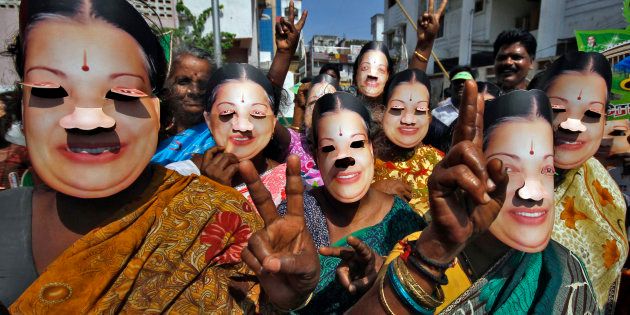
Development economist Reetika Khera differentiates these populist moves from the substantial welfare policies like the maternity benefits scheme (₹18,000 to all pregnant women), midday meals, and health insurance. While her track record in gendering governance is mixed, there is no doubt Jayalalithaa was the first to see women as a constituency in Tamil Nadu, with measurable desires that could be managed for electoral returns. She consolidated the AIADMK's initial female voters--fans of party founder and film star M.G. Ramachandran--and won more. "As a woman in a man's world, she projected an Amma image, referring to women citizens as her children," feminist writer and theatre activist A. Mangai says. "Her protectionist attitude of a welfare state hinges on the image of Amma."
In 2013, Jayalalithaa also launched the state-run Amma canteens, whose self-aggrandising Jayalalithaa motif could be criticised, but the ₹1 idlis and ₹5 lemon rice have been transformative. Khera calls it "a lifeline" for the destitute but also the hardworking poor, especially in urban areas. Similarly, in 2015, she allotted ₹86 crore to giving Amma baby care kits to promote hygiene for the mother and child. Both these schemes are bound to have a lasting impact. Her historic return to power in a successive term in 2016, with majority women votes, shows how successfully Jayalalithaa deployed welfarism to her own political ends.
Industry-friendly
After her death on 5 December, 2016, many corporate heads said they had lost "a champion of industry". When asked if this was true, economist R. Srinivasan asks, "Have you ever heard people in industry say any politician is not industry friendly?" He recalls that after the Global Investors Meet in 2015 in Chennai, some of the same industry voices complained that then chief minister Jayalalithaa was "too inaccessible". At a Delhi public meeting in March this year, union power minister Piyush Goyal said he had not met the TN CM in 22 months. "Whenever I talk to the state power minister, he would say, 'Okay, I will talk to Amma and get back to you'," he said.
While Jayalalithaa charged Goyal with seeking "political mileage" for the BJP in TN, the union minister's statement was not untrue. R. Srinivasan, economist and former member of the state Planning Commission says Jayalalithaa did not have ministers who could give inputs, and she didn't want them to either. "She was largely driven by some of her instincts," he says.
Her historic return to power in a successive term in 2016 shows how successfully Jayalalithaa deployed welfarism to her own political ends.
These instincts led her to court companies like Ford, Nokia and Foxconn during her regime, creating a perception of favourable climate for foreign investment. But it's important to remember that Jayalalithaa did not operate in a vacuum. Thanks to its strength of skilled labour, more than 50% urbanisation, good ports and roads, the state has the highest number of factories in India, across automobile and components, garments and textiles, pumps and motors, chemicals, plastics and leather. All governments have contributed to this, but economist M. Vijayabhaskar recalls that the rise began with the DMK's creation of industrial clusters like Sriperumbudur in the seventies. "By 1976, there was a manufacturing hub every 25 kms, addressing regional imbalances in economic growth," he says.
More recently, the state economy grew faster under the DMK (2006-11), at a rate of 10.1% than under the AIADMK (2011-16), when it grew at 6.5%. Rather than absolute comparisons, growth rate relative to the national rate can reveal more: here too, the DMK achieved a growth rate that was 1.2 times the national rate, while Jayalalithaa managed 1.05 times the national growth. More companies set up in TN under Jayalalithaa (the highest in 2013-14 at 6450) but the Karunanidhi regimes showed vastly more paid-up capital. Job creation was poor under both parties, but the state has been the largest beneficiary of the central-sponsored National Rural Employment Guarantee scheme.
In the past few years, as TN is seeing increasing competition from other states like Andhra Pradesh and Gujarat, Jayalalithaa was unable to stem the outflow. In 2015, big-ticket companies Nokia and Foxconn closed operations in TN. Ford set up its second facility in Gujarat. The auto sector that TN depends on has also been close to saturation point, leading to an overall decline in investment. "Apart from the inaccessibility of the only person making decisions, many industrialists have privately expressed that the kickbacks were just too high under the AIADMK," says Srinivasan. In addition to expensive land due to TN being highly urbanised, and power shortages, industrialists had complained that when Jayalalithaa was in jail for the disproportionate asset case in 2015, no files moved, and approvals were tedious to get.
In 2015, Jayalalithaa held the much-talked-about Global Investors Meet; the government boasted signing 98 agreements with an investment commitment of about ₹2 lakh crore, double their target. But according to the Directorate of Industrial Policy and Promotion (DIPP) under the union Ministry of Commerce and Industry, only investments worth ₹501 crore were implemented--a 2.5% implementation rate that was alarmingly lower than other large states like Karnataka and Andhra Pradesh. "Normally, only 10% of this comes through, but in TN, even that didn't happen," says economist M. Vijayabhaskar from the Madras Institute of Development Studies. Since 2011, when Jayalalithaa assumed power, ₹15,601 crores investment was promised, but only ₹6,052 crores came through as of the end of 2015.
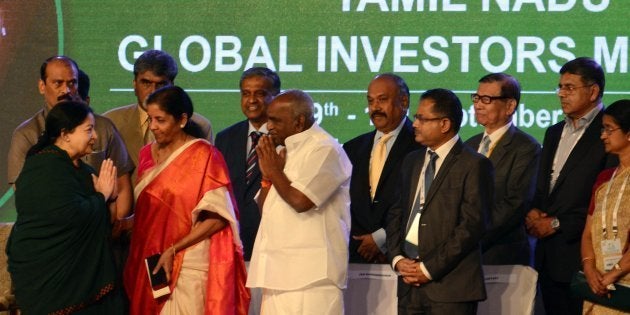
"Jayalalithaa's performance in industry is always overrated," says a senior economist who has worked with the centre and different TN governments. Her efficient image and aggressive marketing of TN as an investment destination paid off, but Vijayabhaskar explains that there was no systematic plan, especially since she didn't consult anyone. "The AIADMK counted on her charisma and instinct, and after her death, they're left with no committees or advisors to make decisions," he says. In March 2012, the AIADMK had released the Vision 2023, setting a target of 14% growth per year in manufacturing and ₹15 lakh crore investment. These targets seem far from achievable, more than ever today.
Governance and administration
"When Jayalalithaa was in power, there was no procedure for decision making, no place for democratic debate," says historian Venkatachalapathy. "But that said, unlike DMK governments where all party leaders would interfere, bureaucrats under Jayalalithaa got clear instructions and no political interference unless she herself meddled directly."
Jayalalithaa single-handedly decided to let the state to take over the sale of liquor, which is now one of its three big sources of revenue. When TN suffered under long power outages, which even largely led to the DMK losing the 2011 assembly election, Jayalalithaa made it her priority. From 2012, she turned the ailing TANGEDCO electricity board around, reducing its losses by cutting leakages, raising prices and budget allocations, and even taking politically risky steps as stopping free electricity to farmers. From a supply deficit of 16,141 million units short of demand in 2012-13, TN achieved a surplus of 11,649 million units this year. "It required an iron hand like hers to make these hard calls," says Vijayabhaskar.
Her handling of the Kumbakonam school fire that burned 94 children, and the tsunami, both in 2004, are praised to this day; she did it by appointing and empowering able officials. She was caught entirely unprepared to deal with the devastating Chennai floods in November and December 2015, but the relief efforts afterwards prevented any epidemics. All three were handled by the same IAS official: J. Radhakrishnan, who is now health secretary of TN.
"It required an iron hand like hers to make these hard calls."
Jayalalithaa also gets credit for the state's cadaver transplant programme (TRANSTAN). Its convener Dr. Amalorpoovananthan Joseph says that although Jayalalithaa crushed the Anna centenary library and Omandurar estate plans, she saw value in the organ registry even though this too was first planned by the DMK. "She appointed herself its chairperson in 2011, which shielded me from any political interference. It has virtually ended illegal, commercial organ trade in Tamil Nadu," says Dr. Joseph.
The DMK often vilifies Jayalalithaa for her Brahmin roots, but it was she who raised the reservation quota from 50 to 69% through a state ordinance. While a politically astute move, Dalit researcher Stalin Rajangam explains how it only strengthened the socially and economically dominant, numerically larger backward castes. "Votebank politics was the extent of her caste consciousness," says Rajangam. It was during her regime, in 2012, that Dalit villages were torched and a young Dalit Ilavarasan allegedly killed in Dharmapuri. In 1994, Dalit villagers in Kodiyankulam were beaten by the police. In south TN, a Dalit man, Gokulraj was killed for talking , and writer Perumal Murugan threatened. "I'm not saying she orchestrated these directly, but she took no action," says Rajangam. "When you sideline Dalits and embolden dominant castes, they will wreak havoc with impunity. In this, she is no different from the DMK."
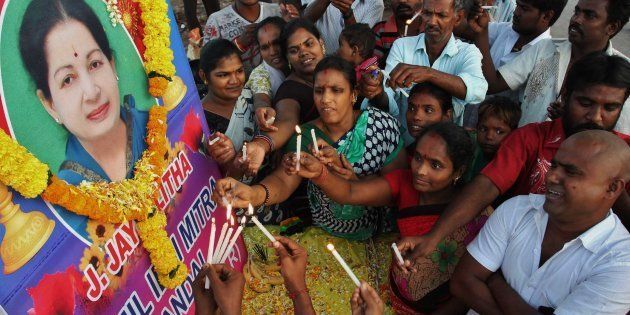
She stood steadfast against the metrorail project for Chennai city, perhaps because it was launched by Karunanidhi. Instead, she launched a monorail project, which former Delhi metro chief E. Sreedharan called a "grave error" because of its limited carrying capacity, short running distance, and unjustifiable cost. He said the "monorail lobby misguided Jayalalithaa". After much criticism, she finally backed the metrorail.
In many instances, Jayalalithaa has made sharp about-turns – which Venkatachalapathy refers to as her "pendulum swings". "Changing your mind is not always bad, but it can be quite unpredictable," he says. For instance, Jayalalithaa undid the methane gas exploration project in the fertile Cauvery delta basin in 2015 after farmers staged protests. However, in 2012, she had over 200 villagers arrested under sedition for protesting against the Koodankulam nuclear power facility. Many believed Jayalalithaa was more accommodating to the former because of the area's large Thevar population.
Jayalalithaa's most cynical swing is perhaps in the case of Sri Lanka. She was against Eelam politics and the Liberation Tigers of Tamil Eelam (LTTE) since her entry into politics (the DMK was close to several LTTE leaders), a stance she strengthened after the militants assassinated former prime minister Rajiv Gandhi in TN. In 2009, however, as the Sri Lankan civil war came to a close, she chimed in with the outpouring of sympathy in TN for the Tigers. "She used Sri Lanka for narrow political gain--there was no ideological or human rights position," says Panneerselvam.
"She used Sri Lanka for narrow political gain--there was no ideological or human rights position."
Under Jayalalithaa, the AIADMK did not engage in dialogue with any of its neighbouring states. "The Cauvery water sharing issue flares up only when the AIADMK is in power," says a senior politician of the Janata Dal (Secular) party in Karnataka. She adopted a similarly rigid stance with Kerala and Andhra Pradesh regarding the height of the Mullaiperiyar and Palar dam respectively. "Jayalalithaa saw no difference between statecraft and party craft," says a senior Congress leader in TN. "She expected neighbouring CMs to obey her just as her partymen did."
What many critics deem Jayalalithaa's unpredictability a sort of feminine whimsy, but it could have just easily been favouritism or corruption, or perhaps genuine conviction about a damaging idea. "The problem is, you could never know why she did what she did," says Vaasanthi, Jayalalithaa's biographer. "It made people call her an enigma or whatever, but this is what too much charisma and too little transparency and procedure means on a day to day basis."
Also On HuffPost:
